Background
In India consumer still has a fascination about desi eggs and meat of desi poultry birds but due to multiplicity of factors backyard poultry farming could not be adopted as a commercial enterprise among the farmers. There are some major constraints in adoption of backyard poultry farming such as high mortality rate in young chicks due to a combination of diseases, lesser body weight gain of the bird’s only upto 1 to 1.5kg, low egg production, small egg size, low feed conversion ratio, lack of scientific practices, lower adoption scientific technologies predation, malnutrition, climatic exposure and feed price fluctuations etc. Therefore, the poultry rearer are unable to reap maximum benefits from this activity and just satisfied their family needs along with some local sell.
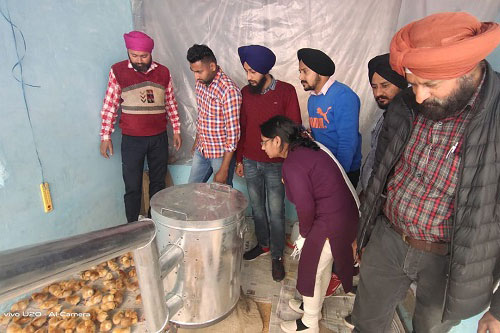
However, the present dimensions of traditional backyard poultry production have changed drastically and crossed the boundaries from the economically weaker sectors to become ‘Family Poultry’, ‘Smallholder poultry’, ‘Scavenging poultry’, or “Village poultry”. different systems of poultry rearing with various levels of intensification are now adopted not only by poor, marginal but also by richer members of the society with intensification according to their economical status and requirements. In the state of Punjab also, the taste and nutritional quality of desi poultry meat is widely accepted traits among the public, hence their demand has always been there. Egg and poultry meat serves as inexpensive sources of protein, especially across different socio-economic groups of Punjab. This form of production is characterized by low-cost initial inputs, with birds allowed free movement in scavenge mode for backyard rearing. As the eggs and meat produced from backyard poultry farming nearly organic, fetches high price and are of high demand among the consumers. In this regards, Krishi Vigyan Kendra, Ropar, Punjab identified the technogical gaps by conducting various field testing and demonstrations and finally motivated the farmers to adopt Backyard Poultry Farming (BYPF) as sustainable source of livelihood and nutritional security through various Human Resource Development programmes. Looking into the vast scope of BYP, KVK concentrated on improving the skills and capacity building of these farmers through vocational and skill development trainings on ‘Backyard Poultry Rearing’. The beneficiaries were taught thoroughly about general management, brooding management, feeding, disease management, vaccination, hygiene and sanitation, candling and hatching of eggs to ensure higher output from the enterprise. KVK Ropar has initiated to promote semi intensive type of backyard poultry farming with improved desi breeds developed by various research organisation such as CARI Nirbheek, Vanraja, Grampriya, Chabro etc so it serves not only interest of producer and consumer but overall helped in ensuring nutritional and livelihood security for the rural masses. Consequent upon the efforts of KVK and prospective nature of the enterprise some of the trainees have opted for semi intensive kind of backyard poultry farming and their economic benefits have forced them to further expand their enterprises. Being nurtured under the guidance of KVK scientists, initially the following farmers got motivated and started their own ventures. All of these beneficiaries are rearing the birds under intensive system but also feed their birds the domestic wastage, coarsely ground cereal grain mixture, green fodder, moringa along with readymade concentrate mixture. Remarkable is that inspite of meagre inputs (birds/ feed/ vaccines) from KVK, merely technical guidance has motivated them to adopt and practise it.
Table 1: Adoption by KVK trainees
|
Name |
Village/ block | Major occupation | Flock size | Inputs by KVK No. & TG* |
Year/ type of intervention |
| Gurdit Singh | Rasidpur/ Chamkaur Sahib | Agriculture& Pig farming | 150 | 20 (Kadaknath) &TG | 2019/ FLD |
| Kamaldeep Singh | Khanpur/ Chamkaur Sahib | Agriculture& Pig farming | 50 | 10 (Kadaknath) &TG | 2019/FLD |
| Manoj Kumar | Surtapur/ Ropar | Agriculture& Pig farming | 200 | TG | 2019/ Training |
| Major Singh | Chauntan/ Ropar | Agriculture& dairy farming | 50 | 20 (Chabro) &TG | 2020/FLD& Training |
| Sandeep Singh | Dhamana/ Nurpurbedi | Agriculture | 100 | TG | 2020/ Training |
| Jujhar Singh | Singhpur/ Nurpur bedi | Agriculture&Commercial poultry farming | 300 | TG | 2020/ Training |
| Talwinder singh | Phool/nurpur bedi | Agriculture | 500 | TG | 2020 /Training |
| Som dutt | Morinda/ Morinda | Commercial poultry farming | 500 | TG | 2020/ Training |
| Harvinder singh | Bara pind/Ropar | Agriculture | 100 | – | 2020/ Training |
| In progress | |||||
| Rajinder singh | Bikkon/ Ropar | Self employed | – | – | 2020 /Training |
| Amarjit singh | Ghanauli/ Ropar | Agriculture | – | – | 2020 /Training |
| Raj kaur | Mansooha/ Ropar | Home maker | – | – | 2020 /Training |
| Barinder Singh | Bara pind/ Ropar | Employee | – | – | 2020 /Training |
Table 2: Economics of broiler farming for1000 birds
|
One time expenses |
Expense per unit (Rs) |
Total expense |
| 1000 sq ft shed | 250/ sq ft | 2,50,000 |
| Brooders 2 | 2500/brooder | 5000 |
| Feeder 20 | 200/per feeder | 4000 |
| Drinker 20 | 200/ drinker | 4000 |
| Miscellaneous | 5/ bird | 5000 |
| Total | 2,79,000 | |
| Recurring expenses | ||
| Chicks (1000) | 22/chick | 22,000 |
| Feed | 34/Kg @3kg/bird | 1,02,000 |
| Electricity | – | 1000 |
| Saw dust | 8 qtl (Rs2.5 per Kg ) | 2000 |
| Sheet for covering | 2000 | |
| Medicine/ vaccines/misc | Rs 5/bird | 5000 |
| Total | 1,34,000 |
Sale price= Rs 100/Kg live weight – Total – 1.75 Kg -1,75,000/-
Income= 1,75,000-1,34,000= 41,000/- (Three months)
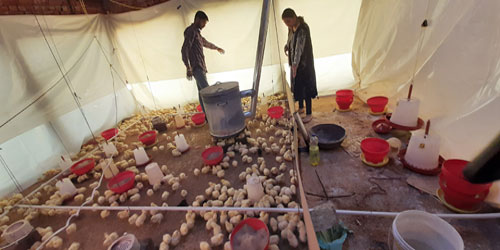
Feedback received by the KVK beneficiaries about BYPF
High demand
Being the desi birds, the acceptability, demand and consumption of eggs and meat has been in high demand in nearby areas. Even during lockdown period when country was facing the problem of sale of poultry products still the sale of improved desi birds remains unhampered.
Low cost of feeding and management
Along with concentrate mixture all the established unit thrive best on kitchen waste, broken grains etc. which lowers down the cost of rearing the birds. Birds are also well managed by all family members including children.
Better productivity
The beneficiaries reported an average 800-1000g weight by 60 days Chabro and in Kadaknath breeds by 65 days respectively. Similarly, 5 months old Kadaknath and 5.5 month old Chabro have started their laying cycle compared to the indigenous germplasm. Due to adoption of the improved breed, there is a tremendous change in the life of these farmers has been observed.
Higher Disease resistance
None of the flocks has faced the problem of infectious disease incidence till date which reflects both, the efficacy of vaccination and disease resistance of these birds. Even mortality remain below 2%.
Self esteem
With minimal labour and time requirement these farmers are running this enterprise in parallel to their major occupations like pig farming, agriculture etc. this has added to their self esteem especially when they have got marketing channel at their own farm or just nearby market.
Social and functional linkages
All trainees/beneficiaries of KVK interventions have developed a kind of brotherhood among themselves. Through grouping on social media, they keep on sharing ideas and issues regarding poultry farming and also aid in developing marketing links for each other. Selling of eggs/ birds at their farm has strengthened their social linkages. Association with KVK has further widened their prospects as they participate in various Kisan melas and other programmes organized by the KVK. They have also developed functional linkages with PAU, GADVASU and CPDO.
Conclusion
The backyard poultry rearing made a remarkable impact on farmer’s livelihoods. The beneficiaries are selling various products like egg, additional males, and spent hens in local market or consumed by their family leads to better nutrition and health. Apart from imparting financial and nutritional enhancement to their livelihood, they have also organized their activities by various groups. Thus, scientific backyard poultry rearing seems to be an enabling factor in empowering and developing entrepreneurial characteristic among rural masses. The results also support the possibilities of establishing this neglected sector as a better alternative for sustainable rural development.


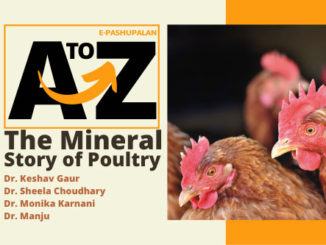
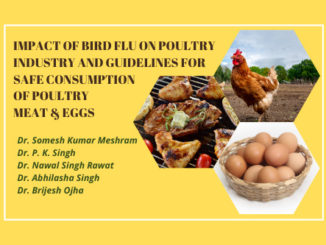
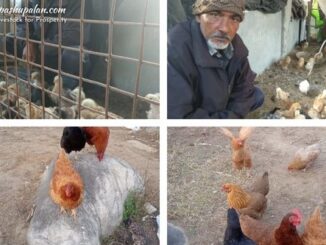

Be the first to comment